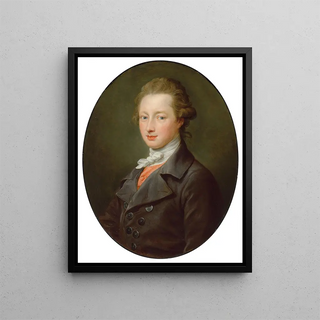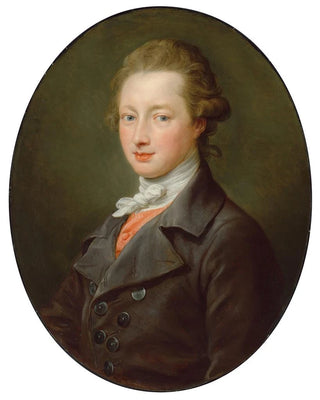Art print | Portrait of a gentleman (Case Conflict) - Pompeo Batoni


View from behind

Frame (optional)
Portrait of a Gentleman (Case Conflict) - Pompeo Batoni – Captivating Introduction
In the fascinating world of art, some works stand out for their ability to capture the very essence of humanity. The "Portrait of a Gentleman (Case Conflict)" by Pompeo Batoni is undoubtedly one of those iconic creations that transcend time and space. This painting, created in the 18th century, evokes timeless elegance and psychological depth that invite contemplation. Through this portrait, Batoni does not merely depict a man; he explores the nuances of identity, social status, and human emotions. The richness of details and mastery of colors make this piece a true masterpiece, capable of awakening the interest and curiosity of art enthusiasts.
Style and uniqueness of the work
Pompeo Batoni's style is characterized by a refined approach and a keen sense of realism. In "Portrait of a Gentleman (Case Conflict)", the artist uses a delicate color palette, blending warm and cool tones to create an atmosphere that is both intimate and solemn. Light plays a crucial role in this composition, highlighting the features of the subject while creating subtle shadows that add depth to the face. The meticulous details, such as the textures of clothing and the expression in the eyes, demonstrate attentive observation of the surrounding world. This portrait is not limited to a simple representation; it tells a story, that of a man whose personality and character are revealed through each brushstroke. The posture and gestures of the gentleman suggest a certain confidence, a self-assurance that inevitably draws the viewer's gaze.
The artist and his influence
Pompeo Batoni, an emblematic figure of the 18th-century Italian school, left his mark on his era with portraits of great finesse and profound humanity. Born in Lucca in 1708, he established himself as one of the most sought-after artists of his time, attracting the attention of nobility and aristocracy. His ability to capture the personality of his subjects, while incorporating elements of their environment, allowed him to create works that still resonate today. Batoni was also

Matte finish

View from behind

Frame (optional)
Portrait of a Gentleman (Case Conflict) - Pompeo Batoni – Captivating Introduction
In the fascinating world of art, some works stand out for their ability to capture the very essence of humanity. The "Portrait of a Gentleman (Case Conflict)" by Pompeo Batoni is undoubtedly one of those iconic creations that transcend time and space. This painting, created in the 18th century, evokes timeless elegance and psychological depth that invite contemplation. Through this portrait, Batoni does not merely depict a man; he explores the nuances of identity, social status, and human emotions. The richness of details and mastery of colors make this piece a true masterpiece, capable of awakening the interest and curiosity of art enthusiasts.
Style and uniqueness of the work
Pompeo Batoni's style is characterized by a refined approach and a keen sense of realism. In "Portrait of a Gentleman (Case Conflict)", the artist uses a delicate color palette, blending warm and cool tones to create an atmosphere that is both intimate and solemn. Light plays a crucial role in this composition, highlighting the features of the subject while creating subtle shadows that add depth to the face. The meticulous details, such as the textures of clothing and the expression in the eyes, demonstrate attentive observation of the surrounding world. This portrait is not limited to a simple representation; it tells a story, that of a man whose personality and character are revealed through each brushstroke. The posture and gestures of the gentleman suggest a certain confidence, a self-assurance that inevitably draws the viewer's gaze.
The artist and his influence
Pompeo Batoni, an emblematic figure of the 18th-century Italian school, left his mark on his era with portraits of great finesse and profound humanity. Born in Lucca in 1708, he established himself as one of the most sought-after artists of his time, attracting the attention of nobility and aristocracy. His ability to capture the personality of his subjects, while incorporating elements of their environment, allowed him to create works that still resonate today. Batoni was also






